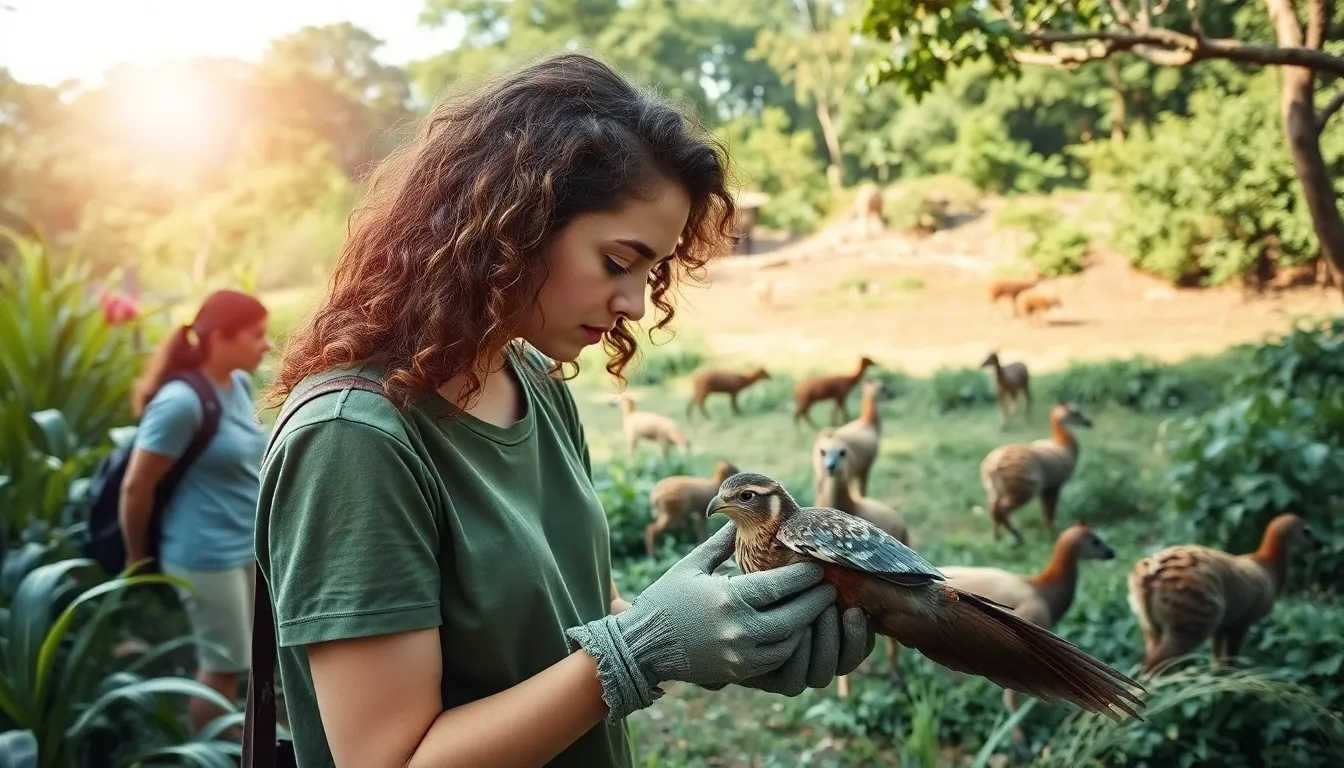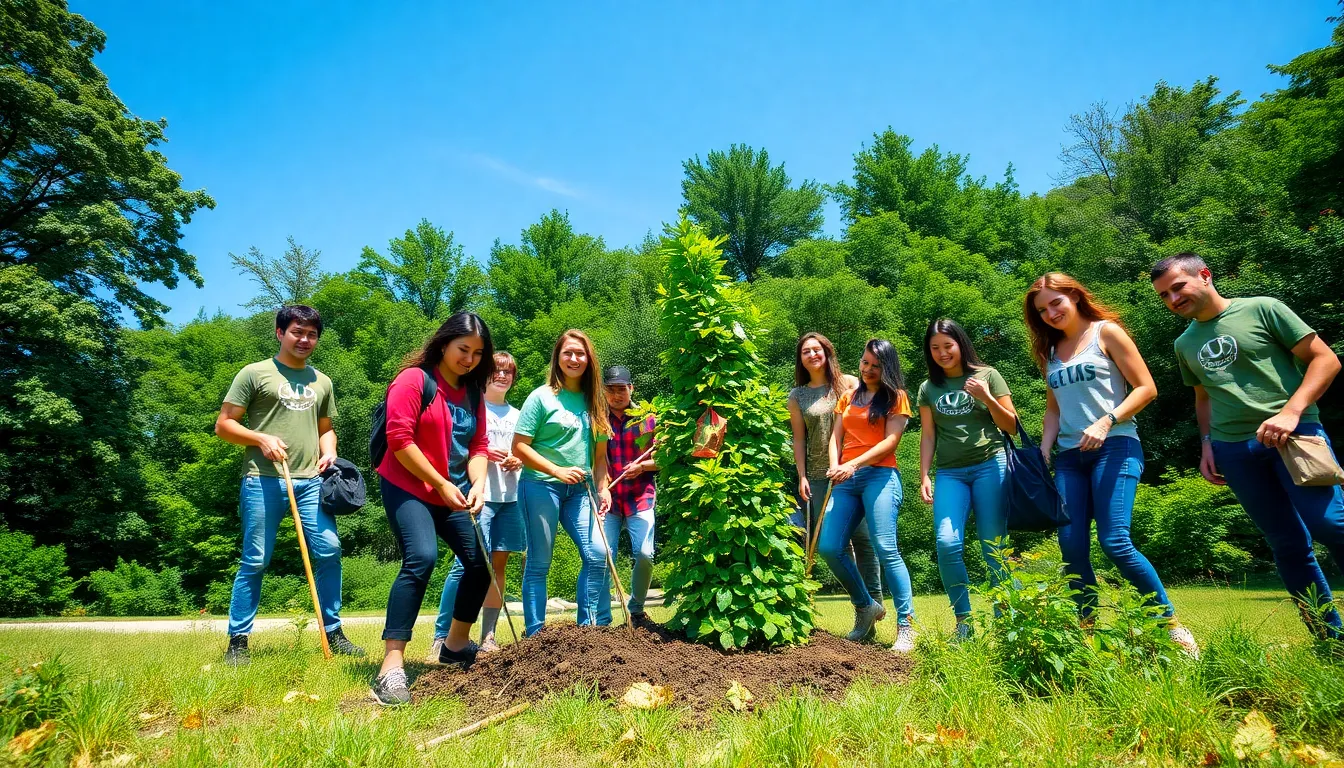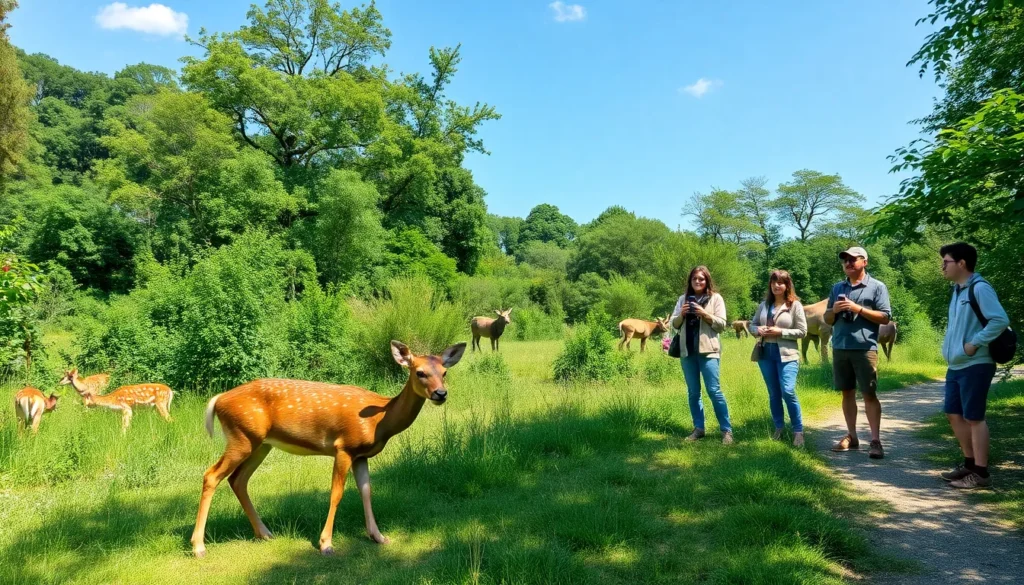Table of Contents
ToggleImagine a place where animals roam free, away from the hustle and bustle of city life and the perils of poachers. Wildlife sanctuaries provide just that—a safe haven for creatures big and small. These sanctuaries are like the VIP lounges of the animal kingdom, offering a cozy retreat for those who need a break from the wild.
Overview of Wildlife Sanctuaries
Wildlife sanctuaries serve as crucial refuges for various species facing the threats of habitat destruction, poaching, and climate change. They provide shelter, food, and care to injured or orphaned animals, ensuring their well-being in a controlled environment. Protection remains a top priority in these sanctuaries, preventing further harm from human activities.
Many sanctuaries focus on rehabilitation and reintroduction programs that aim to return animals to their natural habitats. Successful cases demonstrate the effectiveness of these efforts, highlighting the importance of biodiversity conservation. Various organizations operate wildlife sanctuaries, each uniquely dedicated to preserving specific species and ecosystems.
Visitors often come to these sanctuaries to learn about animal behaviors and conservation efforts. Educational programs foster awareness regarding wildlife preservation, connecting people with nature. Through guided tours, individuals gain insight into the challenges animals face and understand the role sanctuaries play in addressing these issues.
Funding supports the operational costs of wildlife sanctuaries, aiding in their mission to provide care for animals and enhance conservation awareness. Contributions, whether in the form of donations or volunteer work, significantly impact the sustainability of these havens. Each action, no matter how small, contributes to protecting wildlife and their habitats.
Wildlife sanctuaries maintain vital roles in our ecological systems by conserving threatened and endangered species. Engaging in responsible tourism helps promote sanctuaries as centers of education and awareness. Overall, wildlife sanctuaries embody dedicated efforts to safeguard biodiversity for future generations.
Importance of Wildlife Sanctuaries

Wildlife sanctuaries play essential roles in conserving natural ecosystems and protecting animal welfare. These spaces contribute significantly to biodiversity and species preservation.
Conservation Efforts
Conservation initiatives within sanctuaries focus on habitat restoration and ecological balance. They prioritize creating interventions that directly address threats like habitat loss and climate change. Many sanctuaries engage in breeding programs, ensuring the survival of species at risk. Collaborative efforts with governmental and non-governmental organizations enhance the effectiveness of these conservation initiatives. Education programs within these sanctuaries raise public awareness about wildlife conservation, fostering community involvement. Volunteers actively participate in various tasks, strengthening the sanctuary’s mission and reach. Educational outreach extends to schools and local communities, promoting a deeper understanding of wildlife conservation principles.
Protection of Endangered Species
Sanctuaries provide critical protection for endangered species facing extinction. They offer specialized care for animals needing rehabilitation, ranging from orphaned wildlife to those suffering abuse. Reintroduction programs have successfully returned many species to their natural habitats, demonstrating effective species management practices. Endangered species are monitored closely to assess their health and adaptation to reintroduced environments. By creating safe havens, sanctuaries support genetic diversity essential for long-term species survival. Various breeding programs prevent inbreeding and promote healthier populations, ensuring their future. These efforts reflect a shared commitment to conserving biodiversity for generations to come.
Types of Wildlife Sanctuaries
Wildlife sanctuaries come in various forms, each serving unique purposes in conservation. Certain types focus on particular species, ecosystems, or rehabilitation efforts.
National Wildlife Refuges
National wildlife refuges offer protected habitats established by governmental bodies. These areas preserve vital ecosystems, ensuring endangered species find safe havens. Each refuge typically provides opportunities for education and recreation, allowing visitors to engage with wildlife in a responsible manner. Preservation efforts here often include habitat restoration, which supports biodiversity and promotes ecological health. National wildlife refuges also contribute to crucial research initiatives, gathering data on species populations and environmental changes.
Private Reserves
Private reserves play a significant role in wildlife conservation. Created by individuals or organizations, these areas focus on specific conservation goals or species preservation. Many private reserves engage in breeding programs to increase the populations of threatened species. They often collaborate with local communities and conservation groups, leading to effective protection strategies. Educational outreach in these reserves raises awareness about local wildlife and environmental issues. Additionally, private reserves frequently offer eco-tourism opportunities, allowing visitors to experience nature firsthand while contributing to conservation funding.
Benefits of Wildlife Sanctuaries
Wildlife sanctuaries offer significant advantages for ecosystems, animal welfare, and public education.
Ecological Balance
Wildlife sanctuaries maintain ecological balance by providing habitats for various species. They play a critical role in conserving native flora and fauna. Species protection enhances genetic diversity, which promotes resilient populations. Restored ecosystems support natural interactions, fostering healthy food chains. Many sanctuaries conduct habitat restoration efforts to repair damaged environments. Successful breeding programs also contribute to the sustainability of threatened species. Overall, these efforts help mitigate the effects of habitat destruction and climate change, ensuring environments thrive.
Educational Opportunities
Wildlife sanctuaries serve as valuable educational resources for the public. They provide interactive experiences that foster awareness about conservation efforts. Guided tours educate visitors about the species in residence and their natural behaviors. Workshops often cover critical ecological topics, emphasizing the importance of protecting wildlife. Many sanctuaries collaborate with schools to facilitate educational programs. Increased understanding influences community support for biodiversity initiatives. Visitors leave with a deeper appreciation for wildlife, motivating them to engage in conservation activities.
Challenges Faced by Wildlife Sanctuaries
Wildlife sanctuaries encounter various challenges that impact their operations and effectiveness. Two major obstacles include funding and human-wildlife conflict.
Funding and Resources
Limited financial support often hinders sanctuary operations. Many rely on donations, grants, and volunteer efforts to maintain facilities and care for animals. The need for consistent funding affects food supply, habitat maintenance, and veterinary care. Competing for resources with other conservation projects further complicates the situation. Established partnerships with local businesses can help alleviate funding issues, yet long-term sustainability remains a challenge. A financial investment in sanctuaries significantly improves animal welfare and conservation outcomes.
Human-Wildlife Conflict
Human-wildlife conflict presents another significant challenge for wildlife sanctuaries. As human populations expand, wildlife habitats shrink, increasing the likelihood of encounters. Such conflicts can lead to injuries or fatalities for both animals and humans, complicating conservation efforts. Sanctuaries work diligently to educate local communities about cohabitation strategies, fostering tolerance and understanding. Effective conflict mitigation approaches include habitat restoration and wildlife corridors that reduce encounters. Addressing these conflicts is crucial for ensuring the long-term success of wildlife sanctuaries and preserving biodiversity.
Wildlife sanctuaries play a vital role in protecting endangered species and preserving biodiversity. They offer safe havens where animals can thrive away from threats like poaching and habitat destruction. Through rehabilitation and reintroduction efforts, these sanctuaries contribute to the ecological balance and genetic diversity necessary for healthy ecosystems.
The challenges they face, including funding and human-wildlife conflict, highlight the importance of community support and awareness. By fostering education and promoting conservation initiatives, wildlife sanctuaries not only care for animals but also inspire people to take action for the environment. Their ongoing commitment to conservation ensures that future generations can enjoy the beauty and diversity of wildlife.







